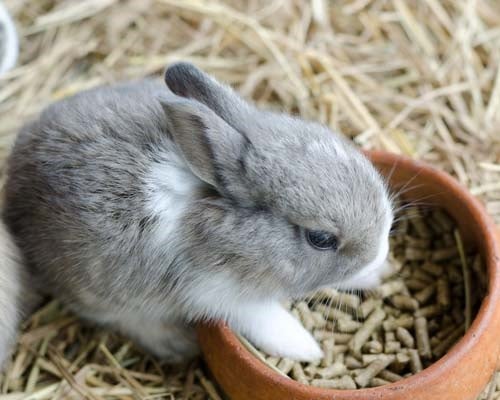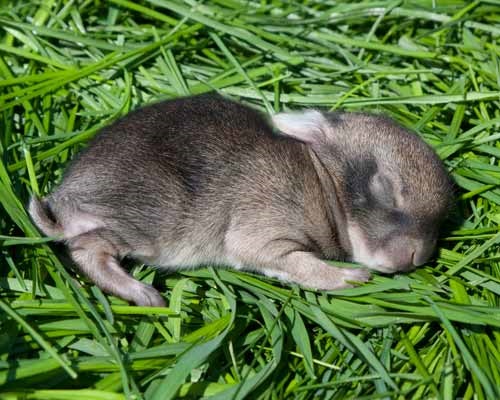
What child doesn't love a cute, furry animal to cuddle and mumble incoherent words at?
So often people opt for a dog, a cat, maybe a fish or even a bird as a pet, but then you get those people who choose rabbits.
While they are the most adorable little creatures and they look like the perfect animal to cuddle with, rabbits require quite a bit of TLC.
Different breeds of rabbit:
Believe it or not, rabbits have different breeds like cats, dogs, birds and the rest of the animals.
They don't only differ by colour.
National Council of SPCA spokesperson, Christine Kuch, says rabbits are classified according to body weight masses:
- Small: it could contain sub-divisions to accommodate dwarf breeds which weigh less than 1kg.
- Medium: accommodate breeds between 2kg and 5kg.
- Large: covers over 5kg breeds of rabbits.
There are quite a number of different breeds, such as the Cotton Tail rabbit, Angora rabbit, Himalayan rabbit and the Flemish Giant rabbit. The latter is such a large breed, visitors to your house may mistake your rabbit for a medium-sized dog. Check it out!
Rabbits generally come across as skittish animals who are more afraid of people, and Kuch confirms that rabbits become stressed quite easily. They're prone to digestive disorders, but they are intelligent, affectionate and social animals who need daily attention – either with humans or other (spayed or neutered) rabbits.
Also read: Time for a pet?
General care of bunnies:
Rabbits may be considered high maintenance animals because their dietary requirements are quite specific and the same goes for their housing situation.
The NSPCA's Care Instruction Sheet for rabbits gives a number of points for making sure your pet rabbit is well taken care of.
1. Enough space for housing, playing and exercise
Rabbits have powerful legs designed for running and jumping; they should never be holed up in a cage or hutches. They need to be in a large space where they can neither escape nor are vulnerable to predators. The space needs to be comfortable and a place where they are able to hide as well.
2. Burrowing space
This is normal behaviour for a rabbit and they should have the freedom and space to dig.
3. Comfy sleeping areas
Sawdust or wood shavings are used for bedding, but it should be free of any fine dusts and contaminants. The NSPCA's guidelines state that at least 4cm of bedding should be placed in their habitat and resinous wood (wood which has a bit of sap and goo on it) can be hazardous and should rather be avoided.
4. Clean living quarters
A high standard of hygiene is important. Wet spots in your rabbit's wood shavings should be changed daily and their entire bundle of wood shavings should be changed on a weekly basis. There may be occasions where you may need to change it every few days.

iStock
5. Temperatures and shelters
According to the NSPCA, rabbits may manipulate their micro-environments by engaging in activities like huddling, building nests and tunnelling. Rabbits' ideal temperatures to live is 16ºC to 22ºC. They cannot cope in high temperatures, they become stressed and it could ultimately result in death. They need temperature regulation so that they do not become distressed – which may lead to them needing urgent medical care.
6. Dietary requirements
The most important element of a rabbit's diet is grass hay or lucerne. The NSPCA's care guide states it is important for ensuring your rabbit has a healthy intestinal tract and it should be available around the clock. Your rabbit would also need quality rabbit pellets. And lastly, fresh leafy greens. Your bunny should also have clean, fresh water in a strong bottle or bowl available to him or her at all times.
Playtime!
Rabbits are playful by nature and they enjoy having makeshift tunnels, wooden platforms and hiding places to keep them entertained. The NSPCA guidelines state rabbits enjoy chew toys such as "untreated wicker baskets, untreated wood blocks, cardboard boxes and dried-out pine cones".

iStock
Also read: 8 reasons your child needs a pet immediately
Rabbits' core hours:
Rabbits basically adapt to their humans' surroundings, so establishing a pretty normal routine – one which coincides with your schedule – is essential. Therefore, it is easy to get your rabbit into a day-night cycles for normal behavioural patterns.
You only need to make sure that your fur baby isn't being done a disservice when your schedule suddenly changes though. Make sure they have enough food, water, entertainment and shelter.

iStock
How do I know if my bunny is happy and healthy?
Rabbits may not really give tell-tale signs that they are ill or unhappy.

iStock
They most certainly don't come to whine and moan like cats or dogs, but you should be able to pick up that your rabbit isn't a happy chappie.
Happy and healthy:
- Active
- Alert
- Sociable
- Eats and drinks regularly
- Clean fur
- Clear eyes
- Breathes clearly
- Hops and moves normally
Unhappy and unhealthy:
- Skin lesions
- Abnormal hair loss
- Distressed breathing
- Lethargic
- Overgrown teeth
- Eye and nasal discharge
- Diarrhoea or a dirty bottom
Also read: Pets are good for your child's allergies
Handle with care!
A child may think it normal to pick up a bunny by its ears because they see magicians doing just that.

iStock
But Kuch says: "NEVER pick a rabbit up by the ears at any time. People who do this need to be educated and armed with the correct information. This is extremely cruel and highly irresponsible!"
The spines of bunnies are also very fragile and should be aligned at all times – don't allow your kid to pick it up by its back or front legs.
Do you think this is something you and your kids will be able to handle? Remember your bunny needs to have regular check-ups with the vet so that his or her vaccines are kept up to date and they are well taken care of.
It is also extremely important that your fur baby is sterilised or neutered, especially if your considering getting more than one!




 Publications
Publications
 Partners
Partners











